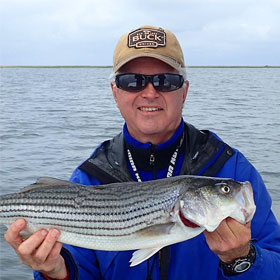Get Ready for Spring: How to De-Winterize a Boat
By Ken Schultz
Mar 23, 2023
Here’s the basics on how to de-winterize a boat, especially the engine, and get it ready for untroubled spring boating adventures
If you don’t do any boating over the cold-weather months when spring is on the horizon you’re thinking about getting on the water again. If you haven’t done it before it’s time to consider how to de-winterize a boat, or, put another way, how to prep a boat for your first adventures of the season.
Regardless of what you did at the end of last boating season, make sure this year starts without glitches, especially with respect to your motor. So how to de-winterize a boat is an important matter.

The Hull
The most obvious step in de-winterizing a boat is to physically inspect the boat. Remove the tarp or cover if you used one, then look for and clean up signs of unwanted visitors, mice and birds being the likely culprits if the boat was outside. It’s a little unnerving to be on the water for the first time and find a frantic mouse running around (happened to me twice). If the boat hasn’t been covered, then it likely can use a good cleaning.
The Engine
If you did thorough boat and engine maintenance at the end of last season, you shouldn’t have to do much now. If not, you can take your boat to a marine dealer to get the engine ready and check on electrical connections and electronic installations. This is a good option if you don’t have the time, inclination, or ability for de-winterizing a boat yourself, if you have some issues that require professional servicing, and/or you’re concerned about starting a boat after de-winterization. If you do it yourself, here are the basic things to address:
• Check the condition and charge level of all batteries
• Check the start-up, trim-tilt, and jackplate operation
• Change the oil and oil filter
• Add fresh gas to the tank (if you didn’t leave the tank full)
• Use an engine additive/fuel stabilizer (especially if you fill up with ethanol gas)
• Check hoses (for cracking), thermostat, and water pump; the latter should be replaced every 200 engine hours, or more frequently if you do a lot of shallow-water boating
• Check the operation of bilge and livewell pumps, bow and stern lights, horn, and fuses
• Check accessory operation, i.e., electric motor, anchor poles, sonar, etc.
• Make sure safety gear is in good order; especially check the state of flares and fire extinguishers
The Trailer
No matter how ready your boat may be, you can’t enjoy trailer boating if the trailer can’t get you to the water safely. You should thoroughly check your trailer, if you have one, and at the very least put more air into the tires, check vehicle-to-trailer electrical connections, and inspect the winch, winch cable, and tiedowns. If the hubs haven’t been greased in a while, re-pack them.
Once you’re ready for the season, make sure that your boat has a current registration, then get out and enjoy the water.









